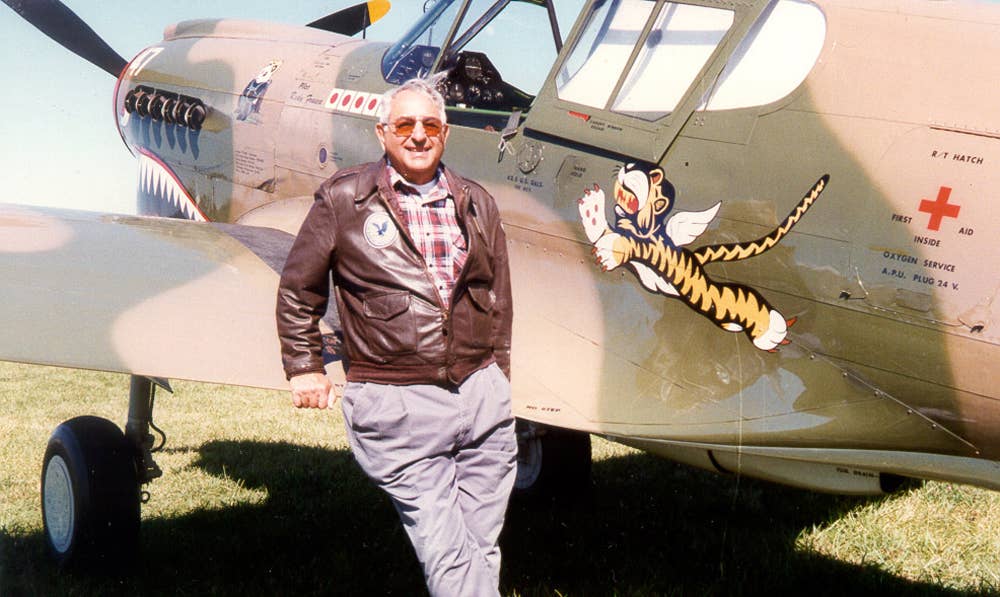
Rudy Frasca and his P-40E were a common sight at airports and fly-ins across the country. Courtesy Frasca International
He had just a couple of straightforward passions in his life: flying—especially warbirds—and his wife, Lucille. Those who flew with and worked alongside Rudy Frasca couldn’t help but be infected by his enthusiasm for aviation, and understand his deep affection for his family.
Frasca, flight simulation icon and founder of Frasca International, died on May 11, 2020, at the age of 89, of natural causes, according to the company. The lifelong pilot and warbird aficionado leaves a legacy, including a thriving flight simulation business, many friends and an extensive aircraft collection. Frasca had built his first simulator at home in his garage in 1958, drawing upon the experience he had training pilots in Link trainers in the US Navy at Glenview Naval Air Station. He attended the University of Illinois, conducting research in aviation psychology and applying that knowledge to his growing business.
Frasca Aviation became Frasca International—and today still pursues the same mission: to train pilots from the beginning using the tools that deliver that training the best, with son John Frasca at the helm and several family members supporting the business. Rudy Frasca learned to fly VFR—“contact flying” in his words, using the terminology with which he was raised—but he felt that if pilots learned to fly using instruments first they wouldn’t favor visual flying. He felt this predilection for ground contact was the root cause of many VFR-into-IMC accidents.
Frasca collected a host of awards over his career, recognized by associations from the Experimental Aircraft Association’s Warbirds of America to the National Association of Flight Instructors, who inducted Frasca into its hall of fame in 2012. He’s one of only two people granted the President’s Award by the University Aviation Association for his contributions to the collegiate aviation community. With the Frasca 142 and Mentor as common as the Cessna 172 and Piper PA-28 at aviation colleges around the world, it’s easy to understand the accolades.
When I first went to visit Frasca at company headquarters in Urbana, Illinois, in October 2003, he showed me the latest addition to the family’s fleet of aircraft, a Flug Werk FW190 still in parts—a kit-built replica of the historic Focke-Wulf FW190 waiting to come to life. He pulled out an old favorite, the PT-17 Stearman he used often for local flying, and we made a short hop over the unrelentingly flat terrain of southern Illinois to a friend’s farm for a quick visit. Ever the instructor, he was gracious enough to lend me the controls for a bit—and I couldn’t help but think how fitting it was that possibly the most well-known pilot in flight simulation enjoyed this kind of low-and-slow—contact—flying so much.

Sign-up for newsletters & special offers!
Get the latest FLYING stories & special offers delivered directly to your inbox






